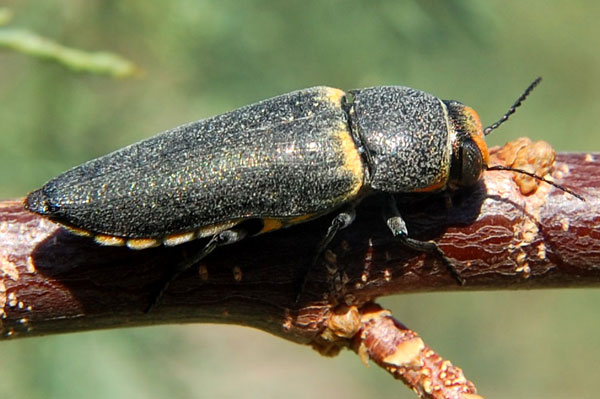Metallic Wood-boring Beetle
Hippomelas sphenicus

This beautiful beetle was found feeding on leaves of Salt Cedar and is about 23 mm long. At the end of September, fresh, succulent leaves of any kind are becoming increasingly scarce, which might explain why this exotic, invasive plant was chose. Cave Creek, Maricopa County, Arizona. Sept. 30, 2008.
Buprestidae -- Metallic Wood Boring Beetle Family
The immatures of these beetles live as wood-boring grubs, cream to white in color. This species likely uses dead trunks and branches of mesquite (Prosopis). During this stage they are also known as round-headed wood-boring beetles because the galleries are circular in cross-section. Tunneling through the wood is a long, slow process. A year or more may be spent as a grub before before the grub transforms into a pupa and later emerges as an adult beetle. This tranformation is called metamorphosis. The adults have acute vision and can fly - the wings are concealed beneath the hardened wing covers (elytra) when the beetle is walking.
There are many, many kinds of Metallic Wood Boring Beetles in the Sonoran Desert. Many are very colorful and are favorites with collectors. As adults they are often found on flowers or new leaves where they feed lightly. Otherwise most of these beetles' activities are related to mating and egg laying. The eggs are laid in dead or dying wood of trees and shrubs. Many species are specific about the species of trees used for the immature, grub stage.